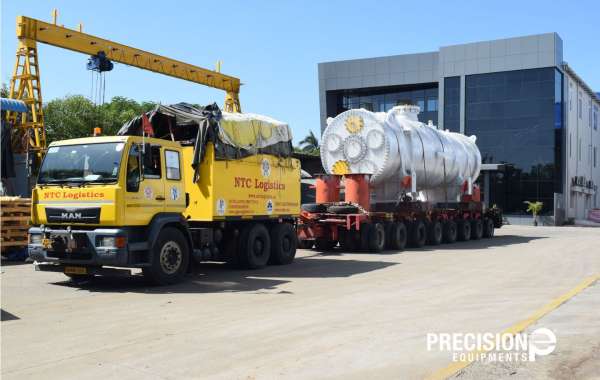Heat exchangers play a vital role in numerous industries, facilitating the transfer of heat between fluids without mixing them. Among various types, the Shell and Tube Heat Exchanger stands out as one of the most versatile and widely used options. Known for its reliability, efficiency, and adaptability, it serves as a cornerstone in sectors ranging from power generation to chemical processing.
What is a Shell and Tube Heat Exchanger?
A Shell and Tube Heat Exchanger is a device designed to transfer heat between two fluids, one flowing through the tubes and the other around them within a shell. The design typically consists of:
- Shell: The outer cylindrical casing that holds one of the fluids.
- Tubes: A bundle of tubes that carry the second fluid.
- Tube Sheets: Plates that hold the tubes in place and provide sealing.
- Baffles: Components inside the shell that guide fluid flow and improve heat transfer efficiency.
The exchanger operates on the principle of heat transfer through conduction, where heat passes through the walls of the tubes from one fluid to the other.
Applications of Shell and Tube Heat Exchanger
The adaptability of the Shell and Tube Heat Exchanger makes it a preferred choice for a variety of industries:
- Chemical and Petrochemical Industry: Used for cooling and heating chemical compounds, distillation, and condensation processes.
- Oil and Gas Industry: Plays a crucial role in refining crude oil and processing natural gas.
- Power Generation: Helps in cooling steam turbines and managing heat in thermal power plants.
- HVAC Systems: Used in heating, ventilation, and air conditioning systems for temperature regulation.
- Food and Beverage Industry: Ensures safe heat exchange processes in pasteurization and sterilization.
Advantages of Shell and Tube Heat Exchanger
The Shell and Tube Heat Exchanger offers several benefits that make it an industry favorite:
- High Efficiency: Capable of handling high-pressure and high-temperature fluids, ensuring effective heat transfer.
- Versatility: Suitable for a wide range of fluids, including liquids, gases, and even vapors.
- Durability: Constructed with robust materials like stainless steel and copper, making it resistant to corrosion and wear.
- Scalability: Easily customizable to meet specific industrial requirements.
- Ease of Maintenance: The modular design allows for easy inspection, cleaning, and repair.
Types of Shell and Tube Heat Exchangers
Based on the design and application, Shell and Tube Heat Exchangers are categorized into:
- Fixed Tube Sheet Design: Best suited for fluids with minimal fouling. It offers a simple and cost-effective solution.
- U-Tube Design: Allows for thermal expansion and easy cleaning of the tube bundle.
- Floating Head Design: Ideal for applications requiring frequent cleaning and maintenance.
- Double-Shell Pass Exchanger: Enhances heat transfer efficiency by allowing fluids to pass through the shell multiple times.
Precision Equipment: Pioneers in Heat Exchanger Solutions
Precision Equipment is at the forefront of manufacturing high-performance Shell and Tube Heat Exchangers. With years of expertise and a commitment to quality, Precision Equipment delivers:
- Customized Solutions: Tailored designs to meet specific industrial needs.
- Quality Assurance: Adherence to international standards, ensuring reliability and durability.
- Cutting-Edge Technology: Use of advanced manufacturing techniques for superior performance.
- Comprehensive Support: From design consultation to after-sales service, Precision Equipment ensures a seamless experience.
Maintenance Tips for Shell and Tube Heat Exchangers
Proper maintenance is crucial to ensure the longevity and efficiency of your heat exchanger. Here are some key tips:
- Regular Cleaning: Prevent fouling and scaling by cleaning the tubes and shell periodically.
- Inspection: Conduct routine inspections for corrosion, cracks, or leaks.
- Monitor Performance: Keep track of temperature differentials and pressure drops to identify potential issues.
- Replace Damaged Parts: Address worn-out or damaged components promptly to avoid operational disruptions.
Future Trends in Shell and Tube Heat Exchangers
As industries evolve, so does the technology surrounding Shell and Tube Heat Exchangers. Future advancements include:
- Enhanced Materials: Development of corrosion-resistant alloys for greater durability.
- Compact Designs: Introduction of space-saving models for efficient heat exchange in smaller setups.
- Smart Monitoring: Integration of IoT and AI for real-time performance tracking and predictive maintenance.
- Eco-Friendly Solutions: Focus on sustainable and energy-efficient designs to reduce carbon footprints.
Conclusion
The Shell and Tube Heat Exchanger is an indispensable component in modern industrial operations. Its versatility, efficiency, and durability make it a reliable choice across diverse sectors. Companies like Precision Equipment continue to innovate and refine these exchangers, ensuring they meet the ever-evolving demands of the industry. By investing in high-quality equipment and following proper maintenance practices, businesses can optimize their operations and achieve long-term success.




